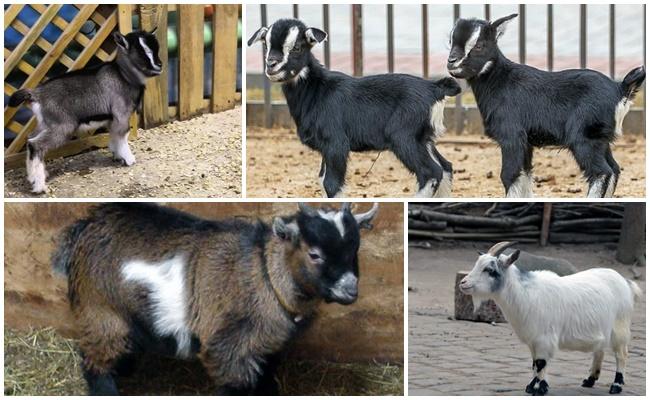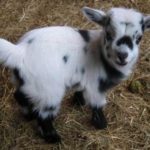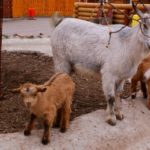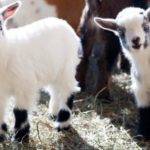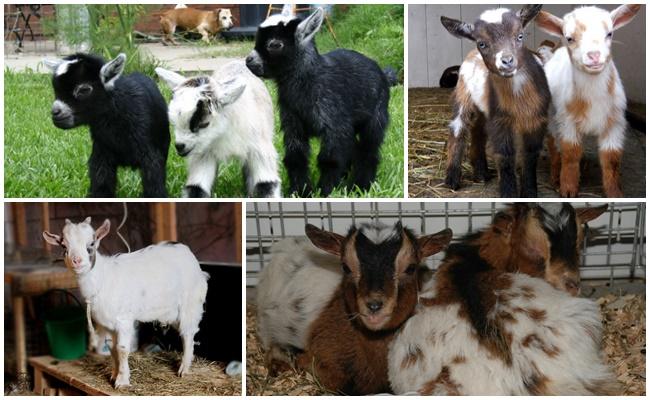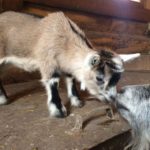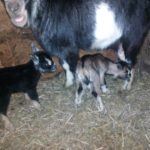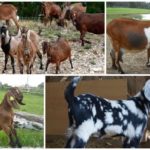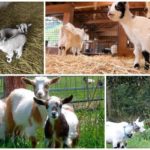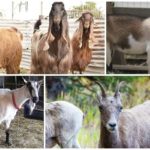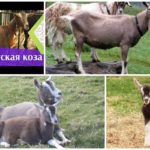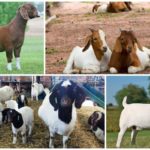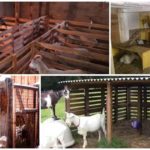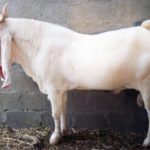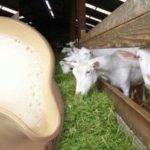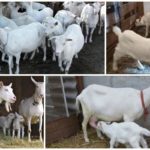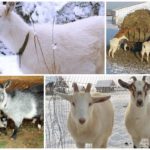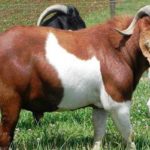Miniature goats stand out in a variety of breeds. Cameroon dwarf goats have become more common on farms. According to reviews from breeders, these are disciplined, non-harmful animals that practically do not get sick and develop well in various climatic conditions. Pets are clean, do not require special attention and give tasty, nutritious milk.
History of origin
The homeland of dwarf animals is the African continent.It is believed that Cameroonian goats owe their origin to the Pygmy and Nigerian breeds, which are still bred today for meat and milk. Thanks to sea travelers, miniature animals came to Europe. Many families keep Cameroonian goats as pets.
Description and characteristics of Cameroonian goats
The animals belong to the group of dwarf goat breeds. On average, the length of the wedge-shaped body is 66-70 cm, the height at the withers does not exceed 50 cm. Males weigh 20-23 kg, and females - 12-16 kg. Small animals have a friendly disposition and get along well with people. The color of animals is quite diverse - the fur grows in white, cream, gray, brown and even black shades.
The coat is not very long, but some farmers breed the animal for wool.
The breed is characterized by multiple births. A goat can give birth to up to five kids. A healthy adult goat produces milk in a volume of 1.5-2 liters. There are individuals that can produce up to 3 liters of fat milk per day, provided they are milked three times a day.
Main pros and cons
Cameroon goats are not demanding in maintenance and are resistant to infectious diseases. The breed also exhibits other positive qualities:
- unpretentiousness in the diet. Animals can even be fed with fallen leaves and thorny bushes;
- adaptability to different climatic conditions. Therefore, the breed is bred in regions with different temperature conditions;
- females can bear offspring throughout the year;
- Pets get along well with other animals and actively interact with humans. If you work with goats patiently, they learn to follow commands and respond to their names.
When breeding a breed, it is also necessary to take into account negative qualities: the animals are very timid, so they need calm treatment, they do not develop well in solitude, so it is recommended to have at least a couple of pets.
Subtleties of keeping and caring for animals
If there are other small livestock on the farm, then miniature animals are given a separate pen. Each pet is provided with a stall with a bed.
The peculiarity of the breed is its jumping ability. Therefore, in order to maintain healthy physical shape, goats in grazing areas need to be equipped with an “obstacle course” - hills, slides or even stairs. Due to the increased activity of goats, it is necessary to regularly care for their hooves - trim and disinfect.
What to feed this breed
The diet can be divided into summer and winter. In the warm season, goats graze on pasture; the basis of feeding is green grass, twigs, and hay.
The animals are also fed fresh fruits and vegetables. The basis of the winter diet are:
- mixed feed, food waste (daily allowance per individual – 150-250 g);
- fruits, fresh vegetables – 800-900 g;
- silage – 200-350 g.
Feeders should always be filled with hay and straw. To replenish the vitamin and mineral reserves, chalk and salt are poured into separate containers. Goats also like to feast on brooms - farmers stock up on birch, oak, and maple fagots. There should always be fresh water in the drinking bowls, which should be heated a little in winter.
Breeding Features
There are practically no problems with breeding animals, since females can bear offspring twice a year.Pregnancy lasts 5 months, childbirth usually takes place without pathologies. It is advisable for a farmer to be present to assist the female if necessary. The kids are born strong and after 3-4 hours they can move independently. In the first 7-10 days, babies eat milk, but gradually switch to an adult diet by the age of one month.
It is not recommended to use animals of the same litter for mating, as the likelihood of hereditary abnormalities increases. For fertilization, methods of artificial insemination and manual mating are used. The best option is manual mating, for which the farmer specially selects individuals. It is important that the procedure can be planned in advance, controlling the number of livestock. If the farm has goats of other breeds, it is necessary to prevent them from crossing with Cameroonian ones.
Diseases and their prevention
Keeping Cameroonian goats is not a hassle, as the animals are resistant to infections and undemanding in food. But we must take into account their tendency to overeat. Pets, gaining weight, become passive and lethargic. Also in the diet, the amount of food with a high protein content is limited, the excess of which can cause an allergic reaction.
Pets do not tolerate dampness indoors. The bedding in the paddock must be constantly changed to prevent rot from appearing on dirty hooves. Symptoms of infection include inflammation between the toes, causing pain and lameness. During treatment, the diseased hoof is trimmed, the foot is treated with an antibiotic and special ointments.
Cameroon goats are popular among farmers, which is not surprising. After all, the lifespan of animals is 17-20 years, and they are not capricious in their care and diet.And thanks to their miniature size and friendly behavior, goats cope well with the role of pets.

